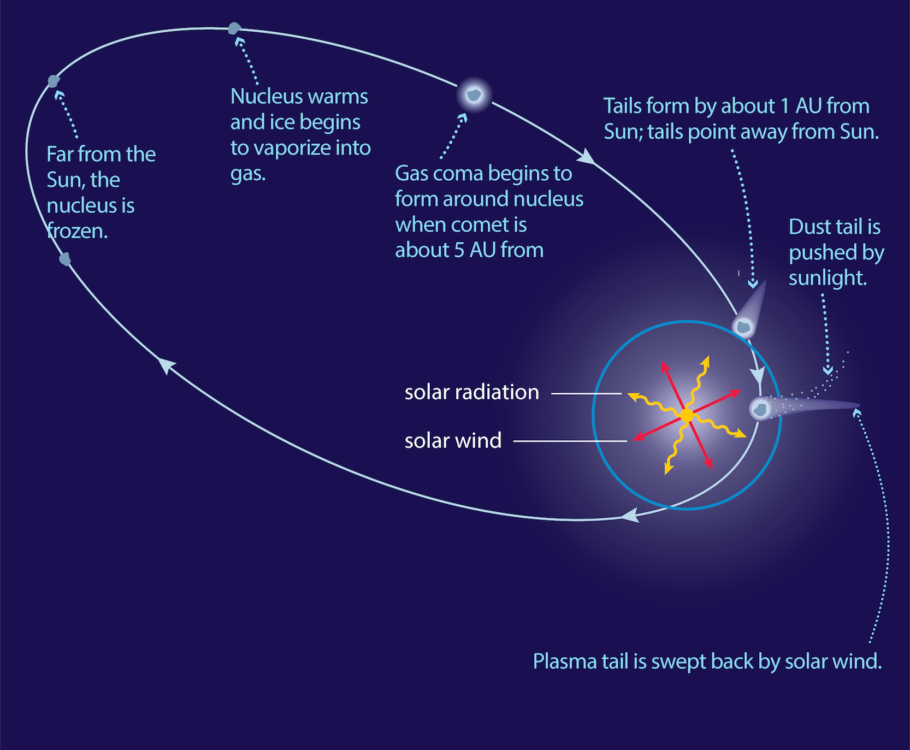Spectacular Comets
Most comets are located in the distant outskirts of our solar system, where they remain perpetually dark and frozen. However, on occasion, another object may disturb a comet’s orbit, causing it to fall inward toward the Sun. In these rare cases, we can get a spectacular glimpse of a comet in our night sky.

As the comet enters the inner solar system, the warmth of the Sun causes the comet’s surface ice to vaporize. Gas spouts from the comet, and also drives out tiny particles of ice, dust, and other material from within the comet. This material makes a huge, fuzzy ball (called the coma) surrounding the solid comet (called the nucleus) and some of this material is pushed away from the Sun to make the comet’s long tail.

Why do the tails always point away from the Sun? The answer is that the tails are pushed outward by a combination of sunlight and something called the “solar wind,” which consists of electrically charged particles that blow outward from the Sun. Because the plasma tail also consists of electrically charged particles it interacts strongly with the solar wind, so that the wind pushes the plasma tail straight back. The dust tail is not affected by the solar wind (because its dusty material is electrically neutral); it is instead pushed backward by sunlight. Because this push is relatively weak, some of the dust tail material lags behind as the comet moves along its orbit, explaining the slight curvature of this tail.
the changes that occur when a comet’s orbit takes it on a passage into the inner solar system.







